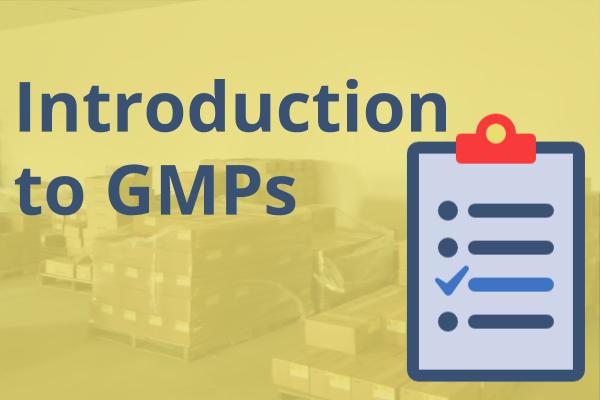This article supports food producers answer the question, “What are GMPs?”
Introduction to GMPs
Good Manufacturing Practices (GMPs) are the set of production standards that have been embraced by regulators, retailers and consumers in the food and drug industries.
GMPs provide a basic assurance that a product was produced under industry-standard conditions. Some of the areas addressed in GMPs include:
Building & facility conditions
Equipment design and maintenance
Employee practices
Sanitation conditions
Raw ingredient sourcing
Maintaining strong production controls
Records and reports
There are several sets of GMP standards which have been endorsed by different governments. Fortunately although they are nearly identical. Some versions of GMPs include:
CGMP* (food) addresses the production of food for the US.
CGMP* (drug) addresses the production of pharmaceutical drugs for the US
EU-GMP addresses the production of pharmaceutical drugs for the European Union
Guide 104 GMP addresses the production of pharmaceutical drugs for Canada
If you are considering aligning your business with GMPs, adopt the set of standards that reflects where your processing is located and where your product will be sold. If this includes more than one set of GMPs, you will want to make sure your operations are aligned with both. Again, they are nearly identical.
*CGMP stands for “Current Good Manufacturing Practices” and is regulated by the FDA.
Food vs. Drug GMPs
In the United States, the FDA defines two distinct sets of GMP standards — Food and Pharmaceutical (Drug).
Food CGMPs: These describe the “methods, equipment, facilities, and controls for producing processed food.” (FDA, 2004). These are meant to ensure that the food is safe to eat.
Drug CGMPs: These assure “the identity, strength, quality, and purity of drug products by requiring that manufacturers of medications adequately control manufacturing operations”. (FDA, 2018).
The sections below reflect the GMP requirements for food.
Understanding the GMP Certification Process
After a food manufacturer aligns their operations with GMPs, they may consider going through the certification process through a private auditing firm. This is how the certification process typically works:
A manufacturer adopts the GMP standards and makes the required adjustments to align with the standards. Depending on the preexisting practices and conditions, this could take 3-12 months.
The manufacturer chooses a private auditing firm (there are many) to conduct the GMP audit.
The auditing firm conducts the audit, which may include an inspection of the facility and a review of records.
The manufacturer will correct any areas of non-compliance and, if they achieve a passing score, they will receive a certificate from the auditing firm.
The manufacturer can provide this certificate to prospective buyers as an indication of their alignment with industry standards.
Why You Should Align Your Operations with GMPs
Regardless of whether your business chooses to pursue certification, aligning your operations with GMPs will have the following benefits:
Decrease in food safety risk to your customers
Lower level of product defects
When your buyers conduct supplier verification activities, they will want to want to know that your operations are GMP-aligned — even if you’re not certified
The Benefits of Achieving GMP Certification
It will unlock access to the many buyers who require GMP certification from their suppliers.
It will satisfy most supplier-verification requirements — meaning less back-and-forth between your team and the companies you sell to.
You will have an advantage over competitors who haven’t been certified to this industry standard.
GMP Requirements
For a detailed set of FDA-aligned GMP requirements, see our comprehensive guide to GMPs
Or, you can learn about the individual good manufacturing practices by topic:


















